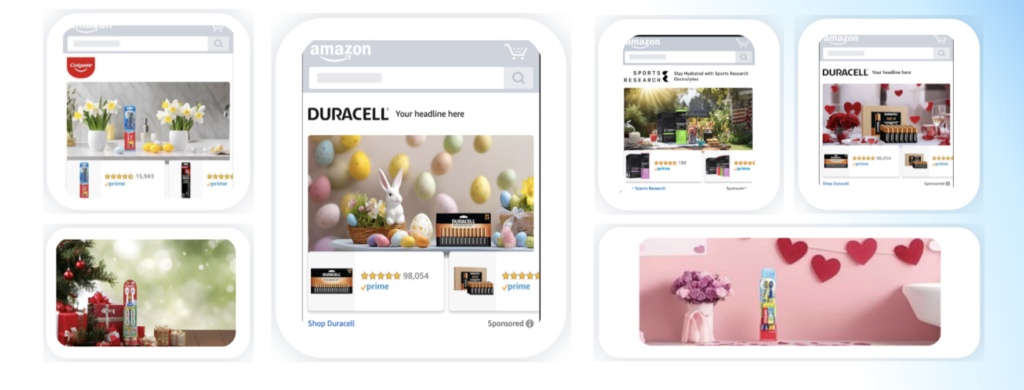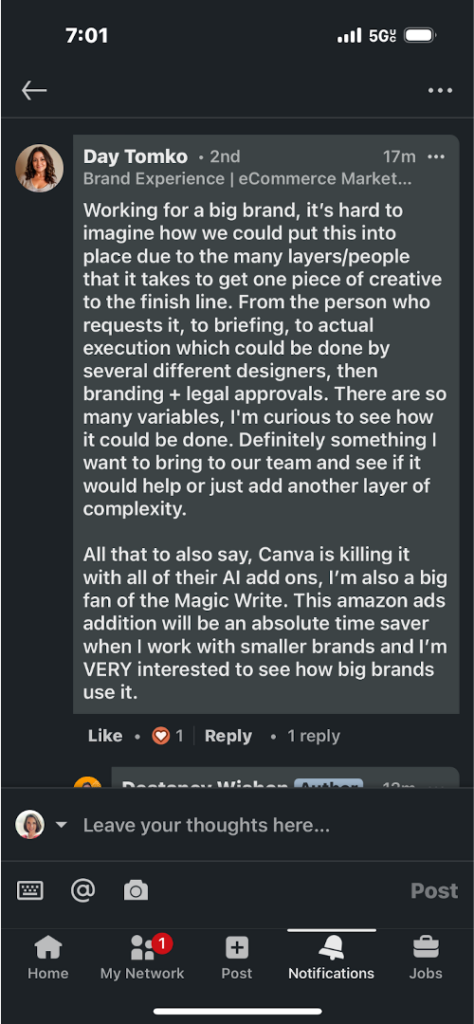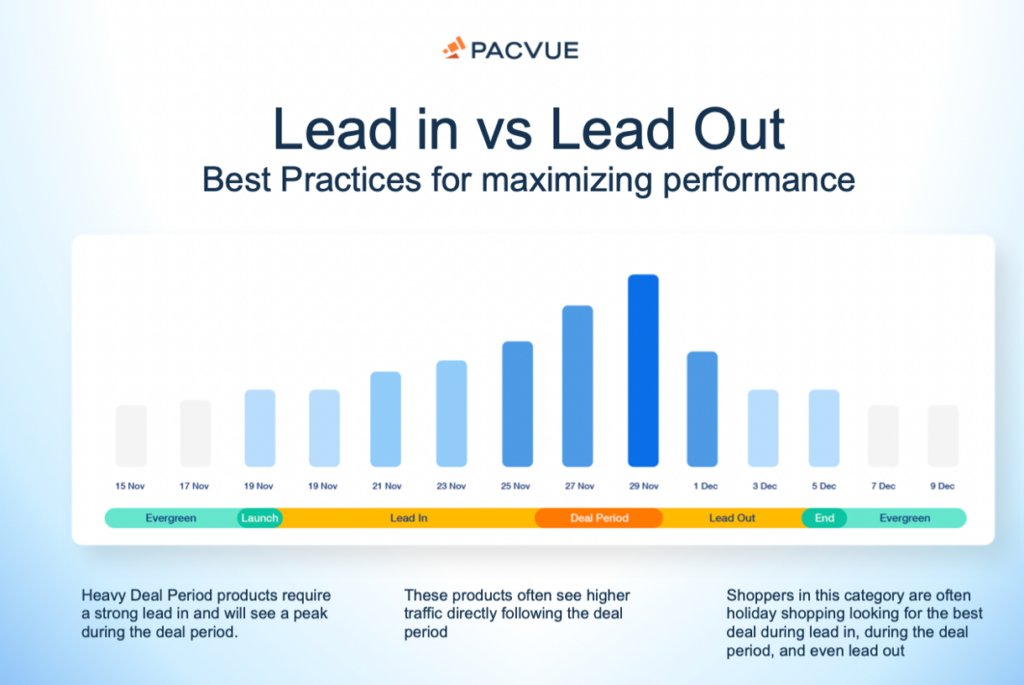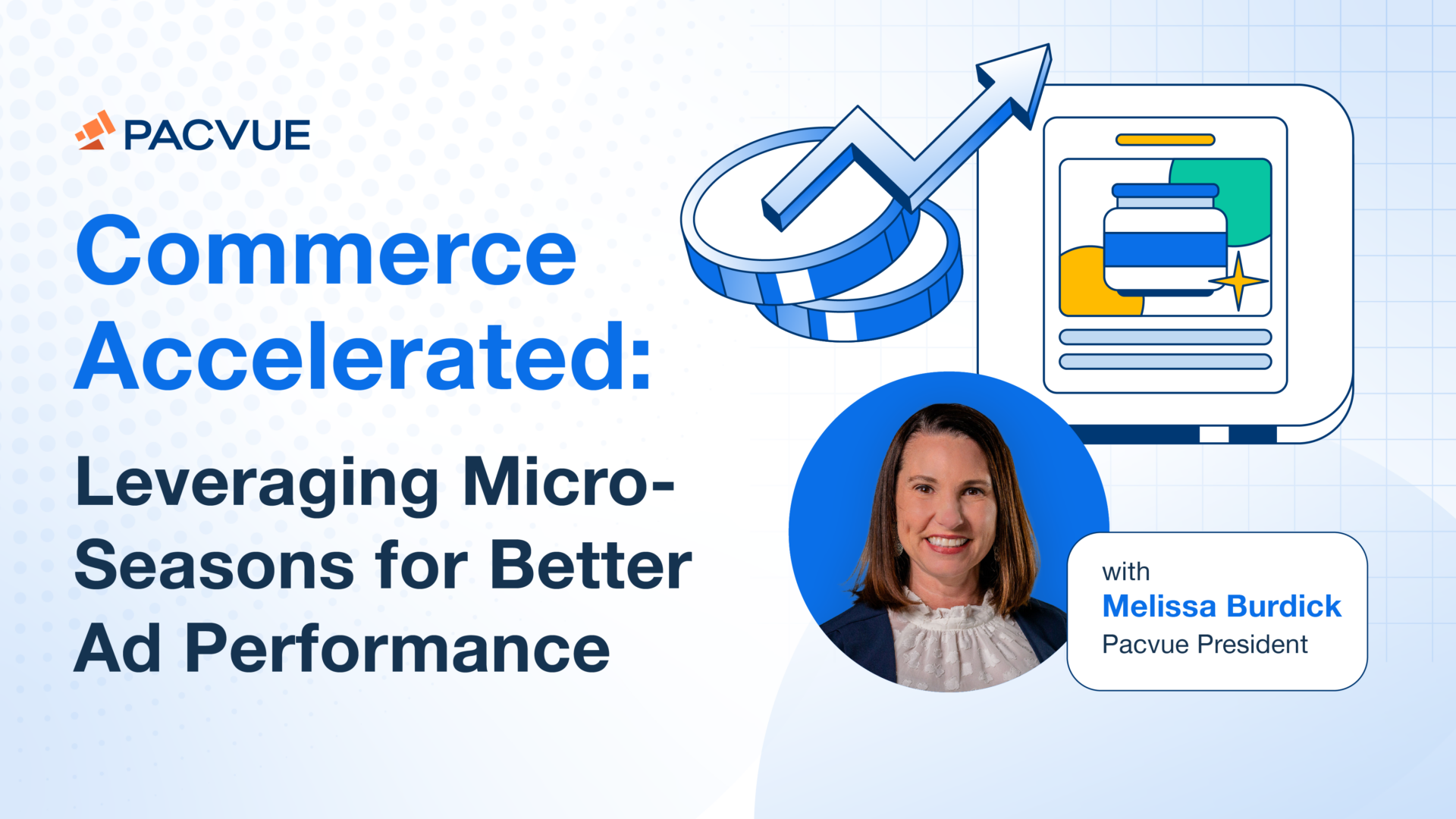At Canva Create 2024, Canva announced a new integration: the Amazon Ads / Canva Connector. This beta solution allows advertisers to connect Canva to their Amazon Ads creative library to import or export brand content. There’s also a way to ensure the content meets Amazon standards as soon as it’s designed. It’s fast and easy – and that’s the name of the game for advertisers in 2024. That might be the most significant part of the integration for Amazon advertisers: Canva gives users access to powerful AI tools to help scale ad creative better than ever.
GenAI is already popular—according to the Artificial Marketing Benchmark Report, 61% of marketers have used AI for marketing activities and 44% for content production. By optimizing ad creative with GenAI, you can be more agile at every point in campaign activation.
AI-powered ad creative also opens the possibilities for a new kind of media planning strategy: the micro-season.
From Timeline to Tentpole
You know the drill: seasonal ad campaigns are a must. The holiday season is the biggest opportunity of the year. Prime Day comes in a close second. Compared to last year, Prime Day 2024 sales grew by 11% and reached $14.2 billion in total retail sales, according to Adobe.
Prime Day is a good example of how hard it is to activate (retailer-specific) tent pole ad strategies on time, because Amazon is the only one who knows (in advance) when it’s going to happen for sure. Most seasonal ad creative has to be ready months in advance. So if you’re planning multiple campaigns with different variations for different holidays, it can quickly become hard to think about ad creative for every potential holiday.
If you want to run a campaign for Labor Day or Halloween this fall, you might have a hard time concurrently creating the right creative for separate campaigns as you get busy planning for Cyber 5 2024.
This is where GenAI can help you build out a micro-season ad strategy: by using AI to generate ad creative specific to different seasonal events, you can build a much more dynamic media plan with more contextually relevant creative for every seasonal opportunity, not just tentpoles.
To test the power of GenAI for a micro-season creative strategy, Pacvue and Duracell partnered together to run an A/B test that measured the performance of a campaign with traditional ad creative and a campaign with AI-generated creative.

Here’s what we found:
- An ad with a micro season theme converts better than an evergreen ad: Even adding a Christmas tree in the ad of an everyday item like a battery drives higher conversion
- GenAI drives unparalleled efficiency: Traditional creative can take two or three months from brief to approval, while GenAI takes about ten minutes and a week of brand approval review
GenAI provides a new golden opportunity for smaller businesses that don’t have the resources of bigger brands: if you can more agilely scale ad creative and campaigns with AI-generated creative, the efficiency and time savings can pay for itself.
Some bigger brands do have challenges with this newer, more agile way of generating creative. As Day Tomko explained on LinkedIn: “Working for a big brand, it’s hard to imagine how we could put in place due to the many layers [and] people that it takes to get one piece of creative across the finish line,” she wrote.

Canva’s integration, and Amazon Ad’s creative tools and templates, help supercharge smaller brands that can adapt and deploy quickly. Measuring the overall impact of Duracell’s AI-generated ad creative and the traditional ad creative, we saw a spike in add-to-cart and orders. But, most importantly of all, it shortened the lifecycle for ad creative and gave Duracell a new kind of contextual creative capability.
So, if AI can generate high-performing creative with a seven-day timeline instead of a 90-day timeline – how should brands think about targeting and activating all that creative effectively?
Here’s where the micro-season media planning strategy comes in.
Targeting the Right Micro-Season with the Right Context

At Pacvue, we recommend what we call the “Lead In, Lead Out” strategy. For Black Friday, for example, this means launching your holiday campaign before Thanksgiving. Around November 15, you should increase spend with evergreen ad creative and shift to contextual creative right before Thanksgiving with a big focus on the days around Black Friday through Cyber Monday. As Black Friday ends, your contextual creative around the December holidays should already be complete and ready to launch.
There are three different ad strategies for three different product types that drive conversions with the Lead In, Lead Out strategy:
- Heavy Deal: Products that are in demand for holidays and sought after depending on the best deal in the category.
- Everyday: Products that are used regularly by consumers and bought in bulk during the holidays.
- Accompanying: Products that accompany other products, such as batteries, which often get purchased after the major deals end or bought within the context of another category or product
When it comes to a brand like Duracell, which is usually an accompanying product, the team thought about the shopper journey and the ad creative that should go with it. With GenAI, it was possible to keep iterating on the context that shoppers would need the products for their other holiday purchases – from toothbrushes to holiday lights – driving more add-to-cart actions through highly relevant seasonal ad creative.
Want to get started with AI creative? Start experimenting with prompts through an image generation tool. There are three keys to generating good ad creative with AI:
- Use keywords to describe the product.
- A/B test with different images and words to see outcomes.
- Be specific about the theme of the image and think about key consumer moments in the journey.
Want to get learn more? Book time with Pacvue’s team of retail media experts.













